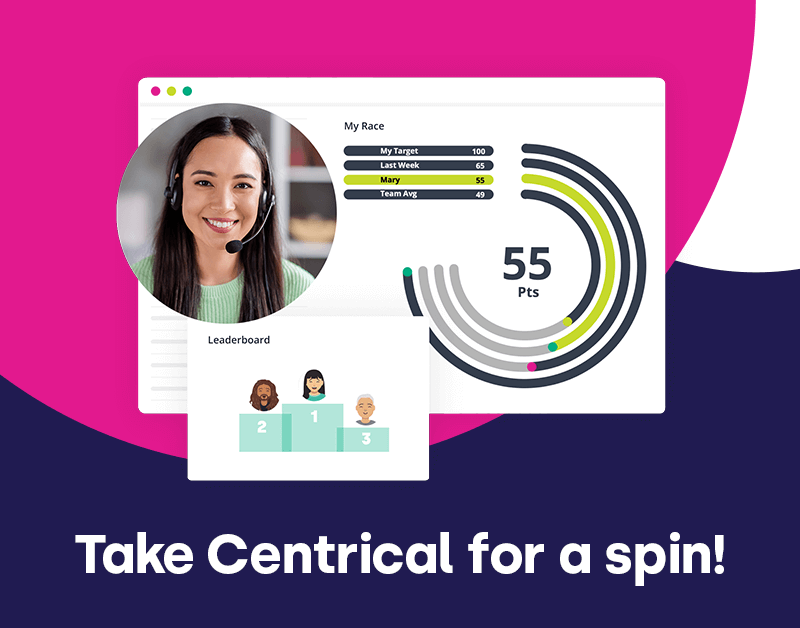This article was originally published as part of Centrical CEO and founder Gal Rimon’s “The Future of Work” newsletter. For more insights on CX, EX, and industry thought leadership, subscribe today and follow Gal on LinkedIn.
How a Family Trip to Six Flags Exposed a AI-Human Gap in Customer Service
I just took my kids to Six Flags on our summer holiday, and what should have been a simple family adventure turned into a masterclass on what can break when customer service isn’t well orchestrated.
Don’t get me wrong: our overall experience at the park was fantastic. But what happened raises some interesting questions about AI, automation, and the future of frontline talent.
For context, Six Flags offers a premium service called the FLASH Pass that lets you skip lines. It’s essentially a VIP experience for visitors willing to pay extra for convenience. I bought three passes online to make the most of our day at the park.
I received the digital passes, each with a QR code that needed to be activated through the Six Flags app. Sounds straightforward, right? But when I tried to activate them, the application couldn’t read the codes. After multiple attempts, I did what millions of customers do every day: I reached out to customer support.
Meet Missi Six, Six Flags’ New AI Concierge
My first interaction was with Missi Six, Six Flags’ new AI concierge. This bot is designed to help guests with park planning, navigation, and general information.
But the AI bot couldn’t understand my issue. It completely missed the mark and didn’t provide a piece of information that would have easily resolved my query—the fact that FLASH Passes can only be activated 30 minutes before your park visit, and that you need separate activations for multiple passes.
The interaction felt like talking to a wall. I kept thinking: What would an elderly grandmother do in this situation?
The whole experience highlighted a fundamental disconnect between what AI promises and what customers actually need.
Since the AI agent couldn’t help me, I did what you’ve probably done countless times: I asked to chat with a human representative.
I was transferred to a human agent, but the handoff wasn’t seamless. I had to repeat my entire query from scratch, as no context had been passed along. And once again, I got no clear answer.
Human Touch to the Rescue
Fast-forward to our arrival at Six Flags, where I approached a flesh-and-blood customer service rep and explained my problem.
Within 30 seconds, the frontline employee knew exactly what to do. They had clearly handled this scenario countless times before. What AI couldn’t resolve despite numerous attempts, the agent could fix right away thanks to their understanding of the product and of the most common customer pain points.
One Company, Four Experiences?
Throughout this experience, I interacted with what felt like four different companies:
- The digital purchasing platform
- The AI customer service
- The human contact center agent
- The in-person experience
We often stress that, as AI handles more customer queries, human agents will handle more complex issues.
In this instance, however, my request was quite simple. The reason why I couldn’t get it resolved until I met an in-person staffer at the park was the lack of orchestration across customer touchpoints and the absence of unified knowledge systems.
Different touchpoints should be designed to work together seamlessly. In 2025, customer experience goes beyond individual, one-off interactions; it’s about orchestrating a cohesive journey across channels.
When a customer moves from digital self-service to AI chat to human support to in-person help, each transition should feel natural and informed, not like starting over with a completely different company.
How To Solve the Orchestration Gap
Here’s what’s needed to address this blind spot:
Unified Knowledge Systems: Every frontline touchpoint should have access to the same information.
Context Retention Across Touchpoints: The customer shouldn’t have to repeat their issue each time they get transferred between channels.
Intelligent Human Routing: When AI encounters its limitations, it should connect the customer to a human agent with the right expertise and problem-solving capabilities.
Empowered Frontline Teams: Whether they’re in a contact center or inside a theme park, frontline employees need the training, tools, and autonomy to solve customer problems.
Feedback Loop: The contact center needs to have an easy way to identify where support failed and a process to solve it next time the same issue occurs, creating a cycle of continuous improvement across all touchpoints.
The Takeaway
The question here is not whether to use AI in customer service (I think that ship has sailed.) It’s how to design systems where AI and human expertise complement each other to create experiences that remove friction and foster loyalty.
Did you find this article helpful? Share The Future of Work newsletter with a colleague!
Engage and motivate your frontline teams
Improve performance with an AI-powered digital coach
Deliver world class CX with dynamic, actionable quality evaluations
Boost performance with personalized, actionable goals
Nurture employee success with the power of AI
Listen and respond to your frontline, continuously
Drive productivity with performance-driven learning that sticks
Drive agent efficiency, deliver client results
Keep tech teams motivated and proficient on products and services while exceeding targets
Maintain compliance while building customer happiness and loyalty
Enlighten energy teams to boost engagement
Engage, develop, and retain your agents while driving better CX
Improve the employee experience for your reservations and service desk agents







 Madeleine Freind
Madeleine Freind
 Natalie Roth
Natalie Roth Linat Mart
Linat Mart












 Doron Neumann
Doron Neumann Gal Rimon
Gal Rimon Daphne Saragosti
Daphne Saragosti Ella Davidson
Ella Davidson Ariel Herman
Ariel Herman Ronen Botzer
Ronen Botzer